The good side of being out of the bush is that it reminds me of all the pleasures of life, especially food. There is a patisserie in Pointe-Noire and the view of the delicacies is as stunning as cycling in the jungle: every single of the hundred delicacies is more appetizing than a large dish with a bâton de manioc in it. Well, it’s not hard to beat cassava …
The economic capital of Congo should be wealthy from all the oil money, yet there is no piped water system in town: each house or compound must manage its own water, with a tanker truck delivering it into cisterns. Katia and Nicolas have a compressor to feed the showers and taps at home.
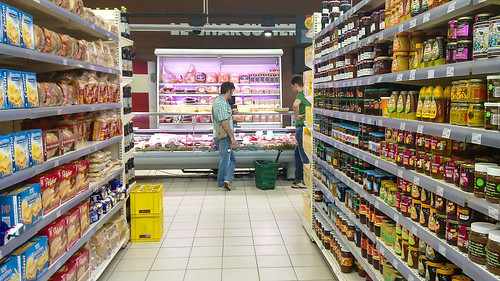
The nsombe worms they served on our arrival in Pointe-Noire was not representative of the local food, and we quickly change cuisine for delicious pizzas and patisseries. There are only two or three cities per country where a cyclist-explorer can go for European food for a change. Pointe-Noire is rather small but it has a Casino supermarket mostly filled with imported products, so it really feels somewhere else than Congo.

From the beach on the côte sauvage, we can see the remains of the wharf, originally 1700 meter long, that used to load ships with potash from Congo and manganese from Gabon. It was abandoned with the flooding of the exploitation of potash in 1977 and the Transgabonais train taking over the cableway-railway route in 1986.
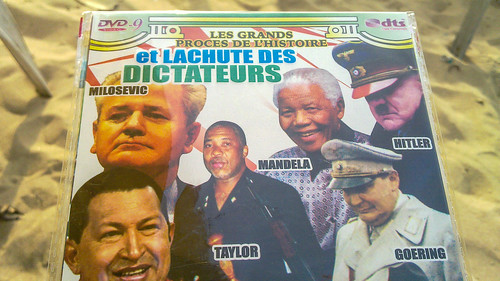
Pointe-Noire is also the critical point where I have to get a difficult visa to continue further. DR Congo and Angola both have the reputation to be tough on visas. I have read a lot on overlanders websites, about people being turned down, or, at best, being granted a 5 day transit visa for Angola. I read also that one must visit their consulate clean shaved and well dressed, so I put on clean clothes before heading there to gather information. Well, I don’t shave and my shoes have big holes anyway, so I don’t look much different than while cycling dirty in the bush.
I need to know the list of required documents with details, especially about the necessary letter of invitation: in which language should it be written, does it has to specify my dates of travel, etc. The security guard of the Consulate is welcoming me with suspicion, asking me to leave my bags behind and making comments on my shoes. Hmm … at least I am allowed to go to the counter inside.
To my surprise, I am very well received there. I speak a little Portuguese and when I pronounce the words “tourist” and “bicycle”, it seems to be unlocking the doors of the country: “Oh so you are a tourist? Then we cannot ask you for a letter of invitation if you don’t know anyone there“. Really? You don’t require useless or forged documents like every other Embassy? Nice, that is perfect then. I will come back tomorrow with my file.
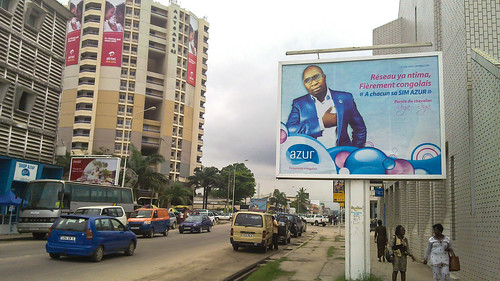
The rain makes a walk in the city a real challenge: a 4×4 is really preferable. When I try to cross streets, I actually face a river. Several times, caught between a flooded street and a car coming behind me, I have to walk in the water until the ankle. And this is just for asphalted roads. The sand roads are worse … The lunch break lasts from 12 to 15, so it is hard to do much in the day.
My second visit at the Consulate of Angola is as pleasant as the first one: I am directed to the conference room where two ladies listen to my story and take my documents in. I am giving extra papers, like a bank statement and a letter of introduction, just to be on the safe side. I fear the beginning of the troubles when they say the letter needs to be translated into Portuguese, but they take it themselves to a translator. They say I don’t have to pay anything until I pick up my passport, and they will call me. It sounds very good … and very surprising that I didn’t need a contact in Angola. Still, I don’t know how many days I will receive. For sure, I cannot do anything with a 5-day visa. Angola, from north to south, will last approximately 2000 kilometers, and a month is already a short period to cycle this distance.

One of my other tasks in town is to find spare tubes. I couldn’t find any 26″ x 2.00 or 2.125 in Yaoundé, I didn’t go through Libreville, so I should really make a stock here. Unfortunately, the city-sport shop ran out of this size. Tube sizes are tricky, as a tube labelled 26 x 1 3/4 will have a different diameter than a 26 x 1.75. They are both called 26 inches and have apparently the same width, but the ISO ETRTO clarifies it: the former has a diameter of 571 mm, the later of 559 mm. They are not interchangeable.
I walk through the Grand Marché and, in between the Chinese, I finally find a shop that has my tubes: cheap Chinese ones, but considered the scary unavailability of this common size in the region, I estimate myself successful. The whole market sellers calling me “Jesus” everywhere around is absolutely annoying.
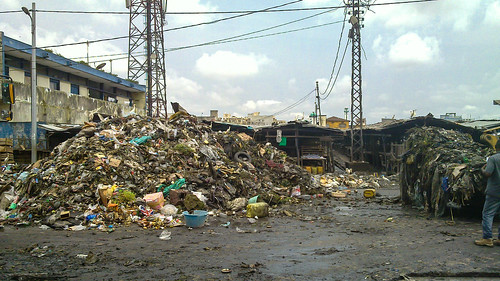
The phone number of the Consulate of Angola shown everywhere on the internet is wrong. As they didn’t call me in three days, I decide to pay them a visit. It is not surprising that a “we will call you in a day or two” means nothing, but I am like a kid expecting a Christmas present. Cycling in the streets sanded up after the rain is a real mess, but I still go faster than the jammed cars. My visa is not ready and I manage to fall into a sewer, that has probably more trash than water in it. Going there during and after the rain provides a guarantee for a bad day.
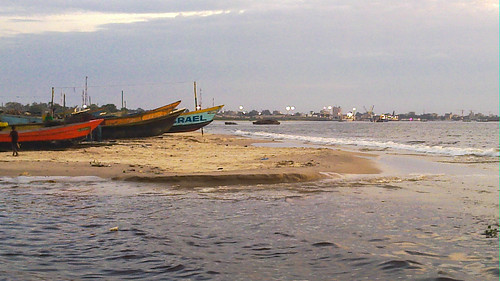
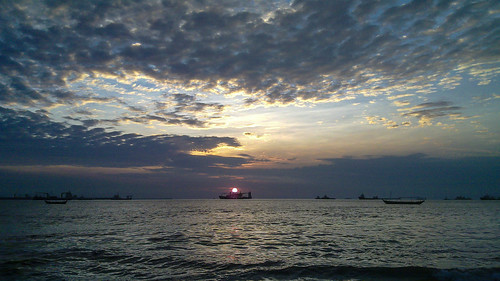
My passport is ready for pick-up on the Monday following my submission. Is the so-called impossible Angolan visa waiting for me? The answer is yes! And the visa is unequivocal: to be used within 3 months and granting 30 days from the day of entrance into Angola. It is great!
I had three concerns before starting this trip, that I didn’t really study beforehand: 1) how to cycle through Mauritania without being kidnapped, 2) how to cycle through Nigeria without being hijacked, and 3) how to cycle from Congo to South Africa, given that the countries in between have visas close to impossible to obtain.
For the record, my first concern was unnecessary; Mauritania is very safe for one who sticks to the main road. My second one was also exaggerated, as Nigerians proved to be very nice. And my third one just cleared up! The road is now open until Cape Town!
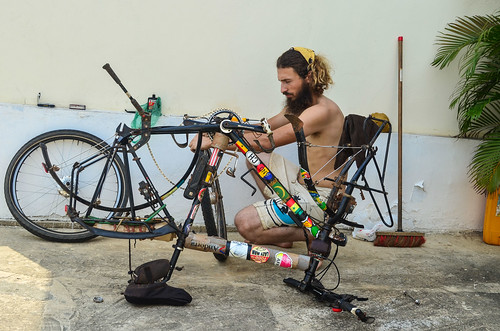
One last task in Pointe-Noire, besides catching up with blogging, made possible at my host’s house, is a good cleaning of the bicycle. I also swap my tires, from front to back and from back to front. It is not recommended to place a used tire to the front wheel; the best practice is, when buying a new tire, to put it in front, and to put the front one on the rear wheel. The reason is that a front tire can live two or three times longer than the rear one.
However, I am very unlikely to find Schwalbe tires until South Africa. They both have a mileage of 9000 km, and I remember that in Mauritania, my rear tire bead started to be seriously worn off after 10’000 km. So I swap them before the rear one is too damaged. They “only” need to last an extra 5000 km.
I broke many spokes between Mauritania and Ghana, but since I visited there a mechanic friend of Ibrahim from Ghana bamboo bikes, it didn’t happen anymore. I don’t know which magic he did while retentioning my partly original, partly Chinese spokes, but it worked great.
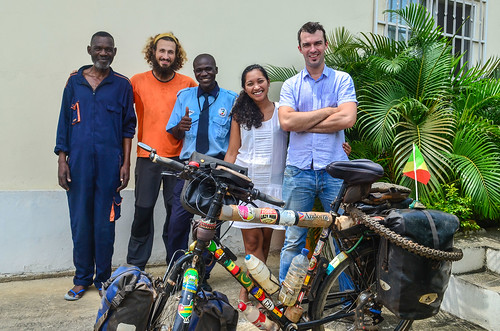
I oil everything I can, including my Swiss army knife and my camera tripod. Speaking of camera, it is also rusty and the auto-rotating LCD screen doesn’t auto-rotate anymore. It is blocked in upside down position.
I also bleach my Hepar plastic water bottle, which bottom turned green from water stagnating for two weeks. But it is still lasting, and I will try to keep it until the end.
So this is the end of the good food, of the comfort, of the hot water, and of the pastries at Citronelle. I leave Pointe-Noire without a picture of the train station, a replica of the one in Deauville. Riding a bicycle outside, around noon, when the atmosphere is sweating even in the shade, I understand why no one else would want to do this. Is it just stupid? I hope my visit of the region, the Kouilou, will reward me for it.
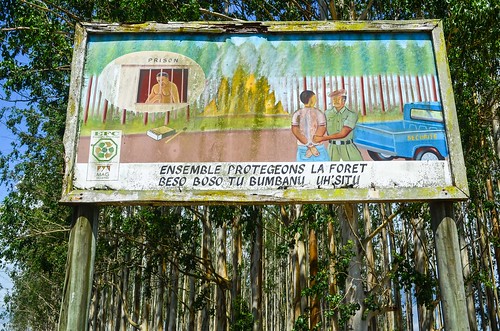
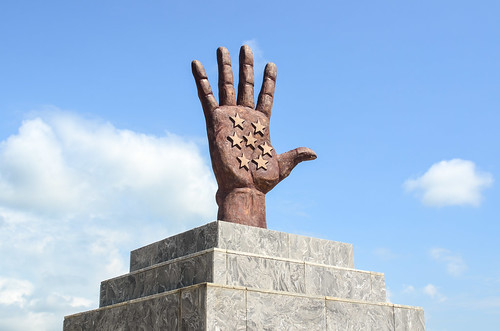
Just north of Pointe-Noire are located the gorges of Diosso. It is a very scenic red canyon opening into the ocean. At the viewpoint, no kid is present: they are known to stop tourists and ask for money just to have a peek, but I may be lucky to be here during their lunch time.
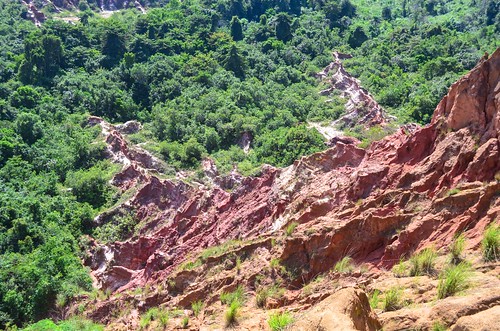

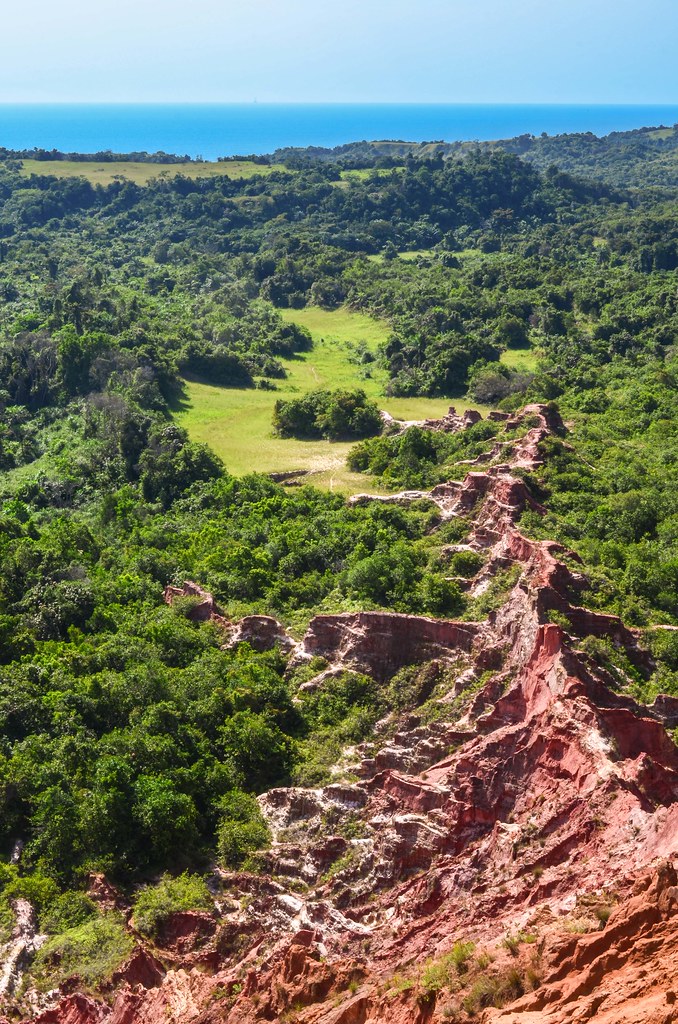
The views are stunning. The red color of the hardened sand reminds me of the Bayanzag hills in the Gobi desert of Mongolia.
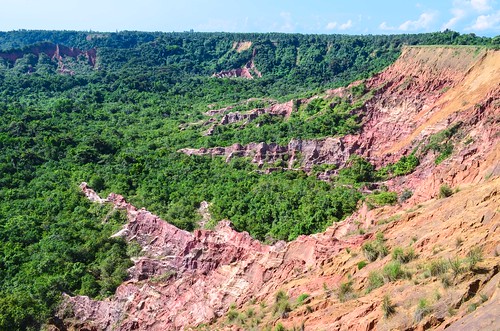


At the bar of the Club des Gorges, there is a staircase going down into the canyon. It is like a jungle walled by red sand and makes a nice walk. I will also camp at the Club des Gorges, facing the sunset, at the edge of the canyon, as the crew let me set up my tent in a perfect location.
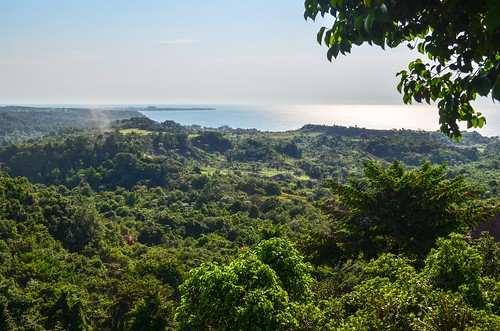
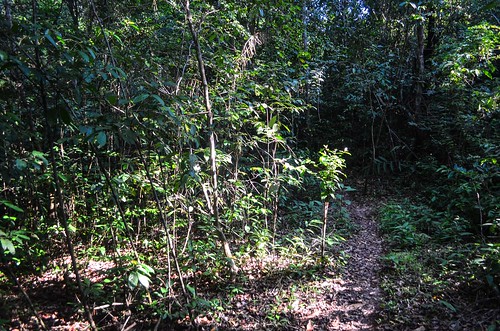
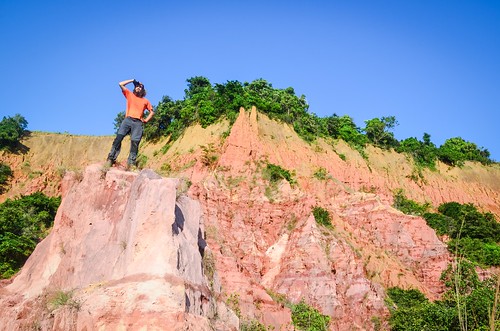

Just next to it is the domain of “the king”. I wanted to see what kind of big house is decorated with two flags in front of it, a Congolese flag and a flag of a hand, like Fatima’s hand. A young girl stop me and say it is forbidden to approach the house of the king. I ask, “king of what, within the Republic of Congo?“. The girl replies that he is the king of the Kouilou, including Pointe-Noire. Hmmm …
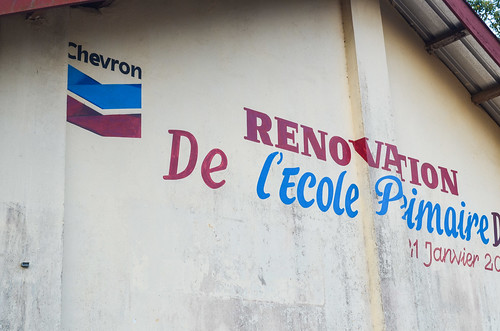
I learn later that he is actually the king of Maluango. I don’t know what are his powers, but it is not surprising to face a cohabitation of the modern administrative system (republic, mayors) with the old one (chiefs, kings).
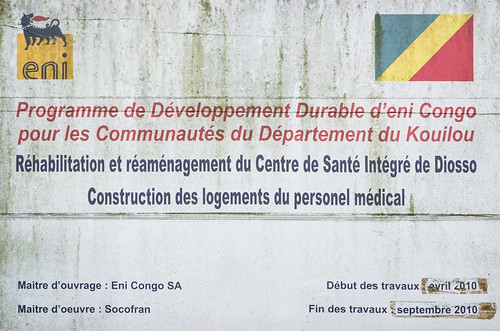
The Club des Gorges is a side business of a Total employee, probably one of the two main employers of the region with the Italians of Eni, and managed by Diosso boys. At the other end of the gorge, there is a vast domain with villas owned by Gomez, an international lawyer working in France for the same Total. It seems that a part of the oil money finally serves the locals and the region. Further away is Pointe Indienne, with its restaurants and weekender villas.
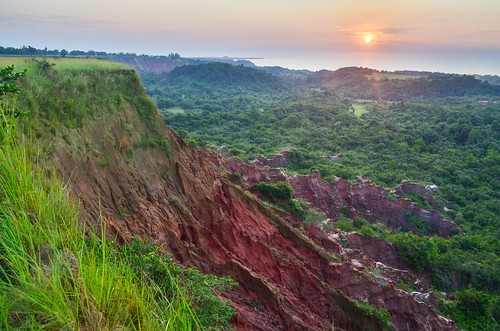
The Atlantic ocean is in front of me, a forest on my right hand side, and the red canyon on the left. As the reddish sunset light fades out, the first stars appear. There can’t be light pollution here. But more interesting than the star lights in the sky, are the star lights in the ocean. They appear in successively. They are revealing the oil exploitation, a few kilometers offshore, that is barely visible during the day. The lights come from the boats and the oil platforms flaring gas (see map of Pointe Noire oil fields).
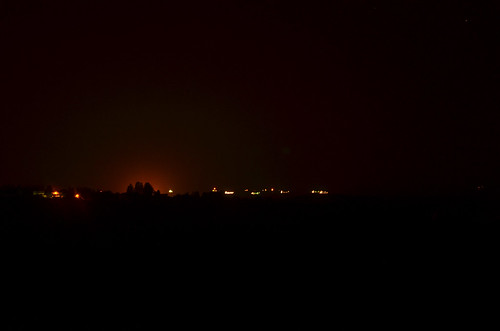
I quickly fall asleep to the sound of the waves afar and the birds, when the stereo of the boys is not playing R’n’B.
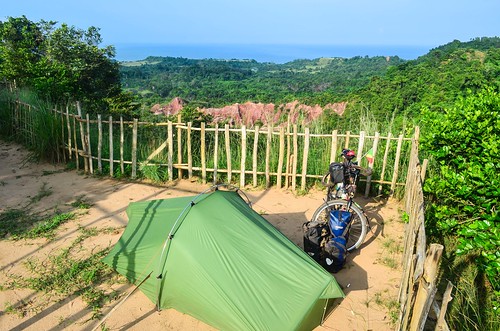
The road of the gorges is the old road leading north to the Conkouati reserve. It was asphalted once upon a time, and is now abandoned for a newer coastal road. It is not easy to cycle in the mud, sand and potholes ; cars can’t pass (I only see a few motocross bikers and a buggy having fun), but highly rewarding: close to the ocean but at the edge of canyons.
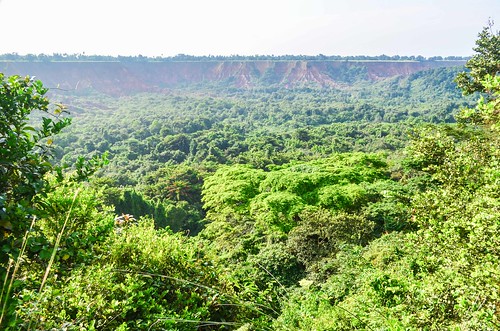
This Sunday, the church of the small village I encounter first makes a lots of noise with drums and songs. It is called Bouéti, and it is followed by an old rusty sign reading “Gorge de Bouéti: turn left“. And that makes a wonderful surprise: a red canyon even more impressive than the Diosso gorge. The echo is working very well, and there is no one around. It is a gem probably ignored by the visitors sticking to the asphalt that disappears after Diosso.
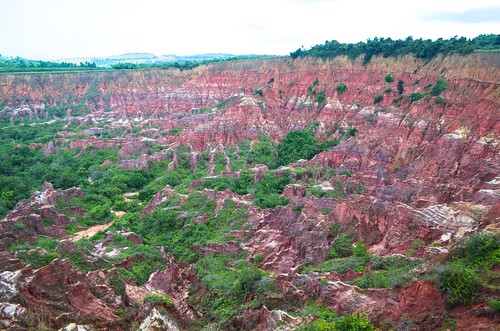

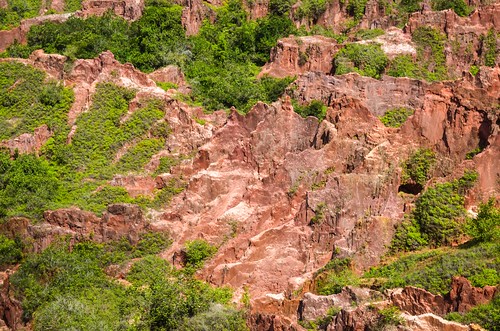
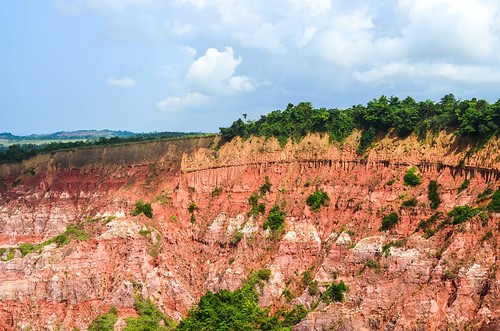
The road is less and less convenient, showing in turn tiny patches of asphalt and sand boxes, sometimes almost falling dangerously into the canyon. But it is still as beautiful, with a third gorge before meeting the asphalt back. I can say that the best about the Diosso gorge is to skip it and explore the two following ones.
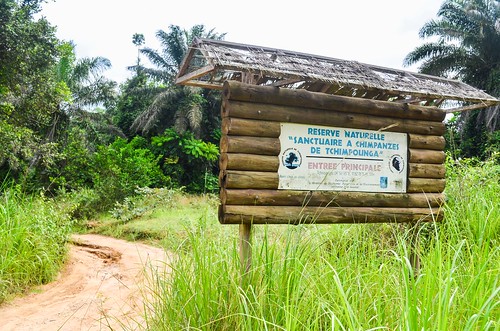
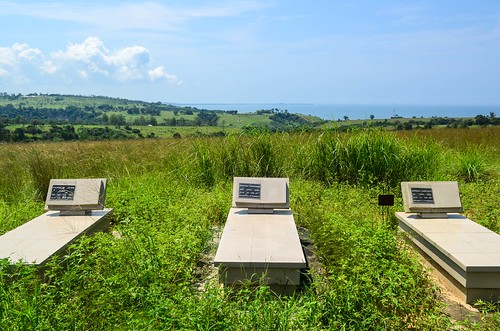


The third gorge before the old road meets the new one:
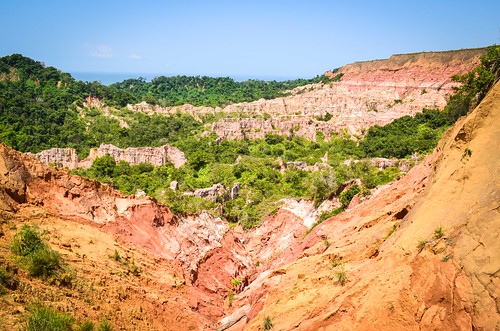
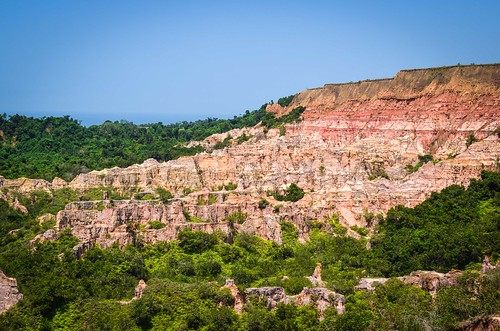
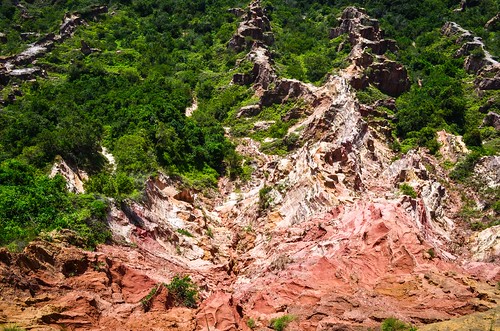
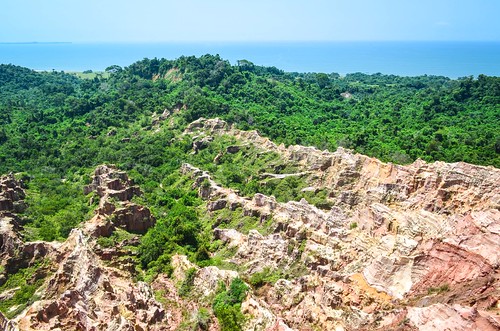
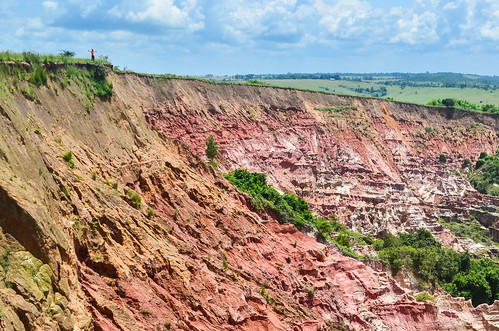
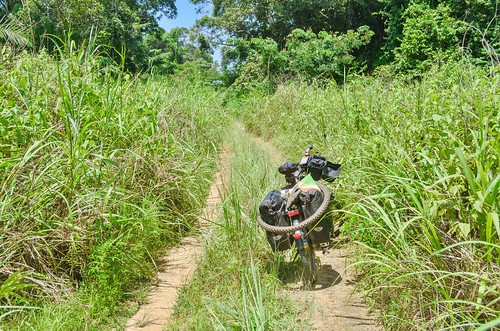
Once on the newer paved road, I turn along the coast back to Pointe-Noire. I cycle within one hour the same the same distance I covered in four hours on the parallel old road. Most of the cars I see now are 4×4 with White people driving, as this coastline has many beaches and restaurants gearing to the Pointe-Noire expat community.

I stop at a restaurant to use the electricity for my laptop, where I am served fish and frozen fries for 7000 CFA (10€). My lunch yesterday was a tenth of this price, and as filling. That is why I only visit tourist/foreigners places as a last resort, since they bring very little additional experience compared to local places, but their prices increase tenfold. Well, they often bring something very rare in Africa and understandably appreciated by foreigners living here: tranquility and a bit of privacy.
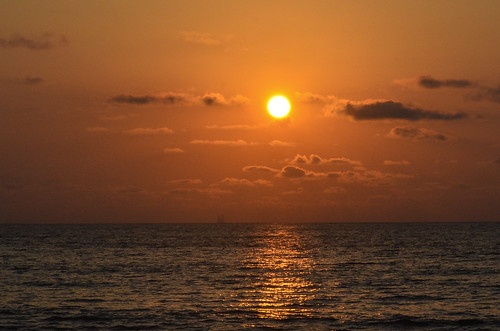
As I wake up near Pointe Indienne, I decide to visit this triangle of land pointing into the sea. The problem is that the roads are sand tracks (with enough sand to sink in it) and the sun burns my face. I don’t quit as I want to reach the tip and see from closer the torchères there. The petrol is exploited onshore.
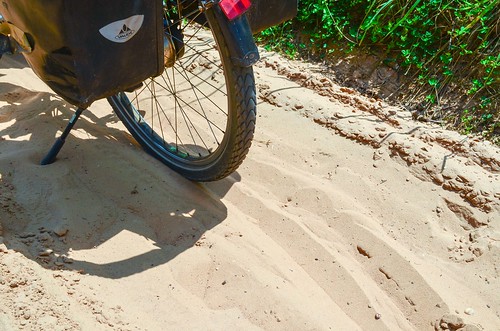
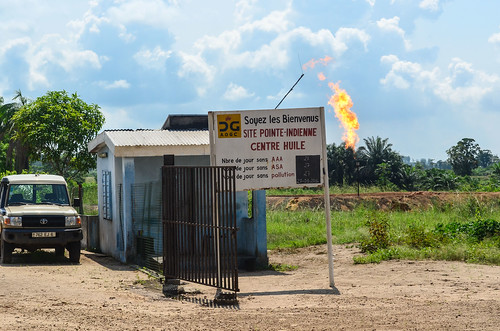
Once at the very end of Pointe Indienne, the scenery is completely different: nice beaches and hundred of empty villas along the coast. There are only a few local caretakers, telling me that all the expats of Pointe-Noire come here on weekends only. As a result, on weekdays, it looks like an abandoned holiday camp. The closest oil platforms, visible at the horizon, can remind them of their work.

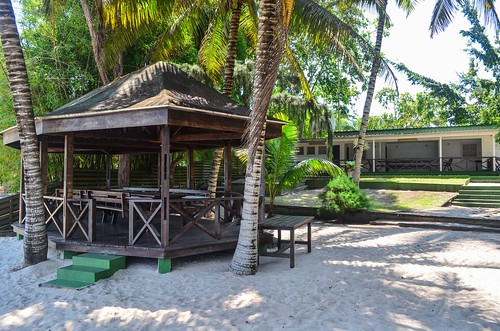
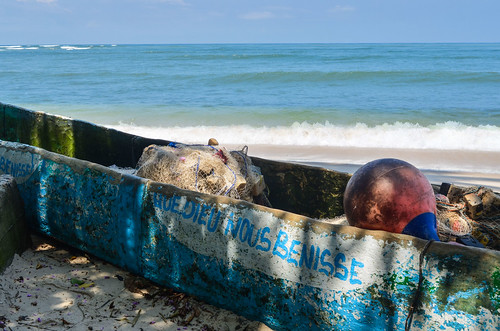

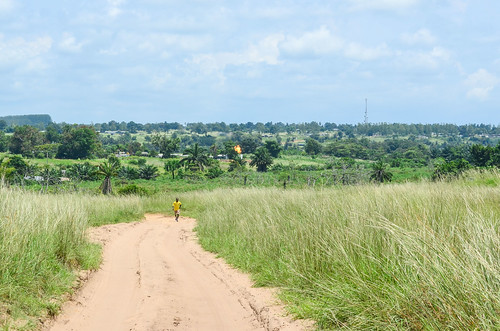
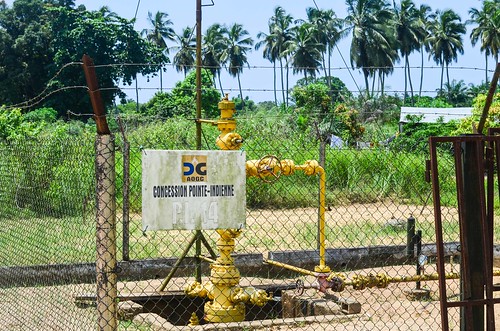

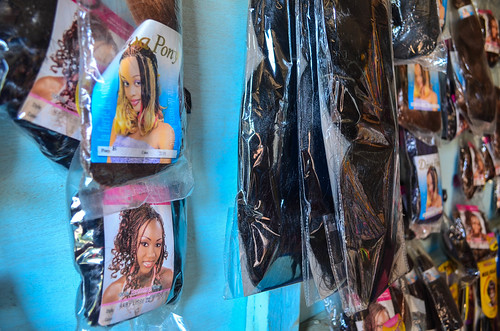
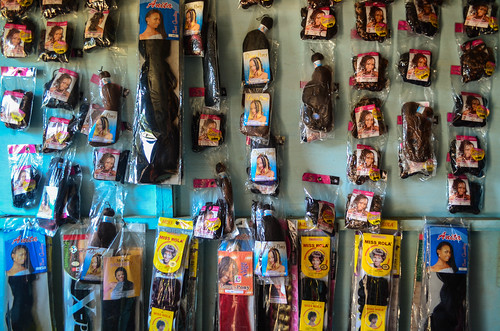

To continue onto Cabinda, I have no choice but crossing the city of Pointe-Noire again. I do it quickly, through the Avenue du Havre, a road parallel to the jammed up main one. It has less traffic, but is not faster, because it is completely destroyed. Today is not a day following the rain, but the road features a small river to cross. The interesting fact is that this is the road hosting the headquarters of companies that are supposed to be handling a fair amount of money. Among the ones I spotted: Total E&P, Eni, Halliburton, Spie Oil & Gas, Cegelec, Schlumberger…

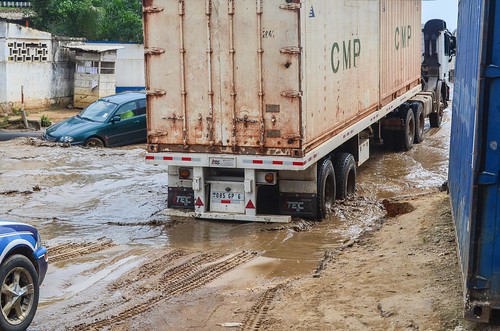
The road south of Pointe-Noire leads directly to Cabinda, the Angolan exclave stuck on the coast between the two Congos. Just before the border, I stop in the town of Djeno, which hosts the huge oil tanks of Total.
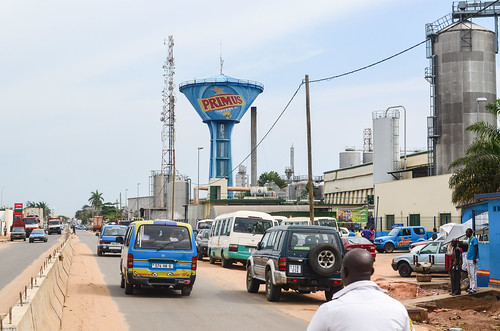
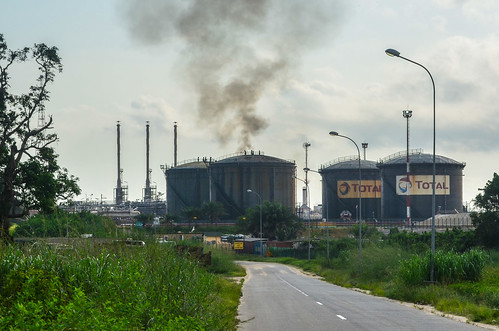
I want to completely finish blogging before entering Angola, where my 30-day visa won’t allow me much rest and internet time. I head to the Malonda lodge, the poshest hotel I have seen in ages, with electricity 24/24, 60 employees and rooms starting at 88’000 CFA (130 €). There is even wifi, the location is perfect, but as expected, I am denied camping in the vast garden.
Thus, I roam around to find a place to pitch my tent close enough so as to return later at the hotel bar to use the electricity. Jean-Marie is working in a field and tells me I can sleep at the neighboring huge house. But the occupants, a lady and a caretaker, are not there and I just hang my mosquito net under a roof outside. In the evening, I count 23 lights in the sea, platform and boats operating for oil.

The Malonda lodge is good for (probably unconsciously) providing an unsecured wifi access point next to the pay-per-use one, but the atmosphere is very sad: it is empty until the oil workers arrive late afternoon, then it is not fun either. Much friendlier in Djeno is Xavier’s Mukiwa beach club, unsigned but roughly 500 meters north along the sand tracks. As a traveler himself, he welcomes campers. Sadly, there is no wifi there.
While internet is quite cheap on convenient on SIM cards for mobile phones (although slow and quickly capped), it is quasi impossible to find a free hotspot in these countries. Impossible outside the very few big cities. And when internet is available, decent speed and data limits are very expensive, as of course, landline internet is not for today (electricity and water networks are still waiting). There are no McDonald’s, and only high-end restaurants to provide sometimes an access.
My huge empty house is quiet and perfect, as I can swim in the ocean when I get up. The lady living here is not coming back for three days, and the house looks quite run down, nothing is working. I learn later that it belongs to a French oil worker (which explains the jacuzzi, the pool, the washing machine, etc) who got his face cut open by his wife and a broken glass bottle. Apparently, people marrying Gabonese and DR Congolese ladies must be prepared for tough conflicts … And as it happens too often, a first-world-furnished house let into the hands of locals is quickly turned into a village hut by total lack of maintenance. It seems that maintaining a house properly working is unnecessary and too demanding for someone who can live in the dark, cook on charcoal, and travel to the river every day for fresh water.
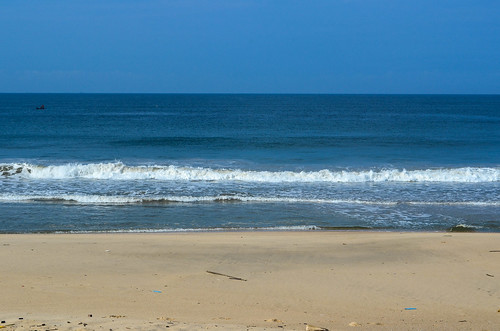
This is my last day in francophone Africa. Tomorrow I will cross to Cabinda and my three last countries until Cape Town, Angola, Namibia and South Africa. I didn’t imagine how much French would be useful and necessary to travel this side of Africa, as more than two thirds of the countries between Morocco and Congo speak French and almost no English. It is not realistic to learn the vernacular language that changes every 100 or 200 km, so the same experience without being able to speak French with the people would be surely different.







What a fabulous looking cycle trip! I saw a job advertised in Point Noire and wondered where it was on the map and came across this. Let me know if you ever write the book.
Superbes photos! Puis-je les utiliser pour le site internet?
great pictures! May i use them for my website? http://www.vivreaucongo.com
Cheers
Florence